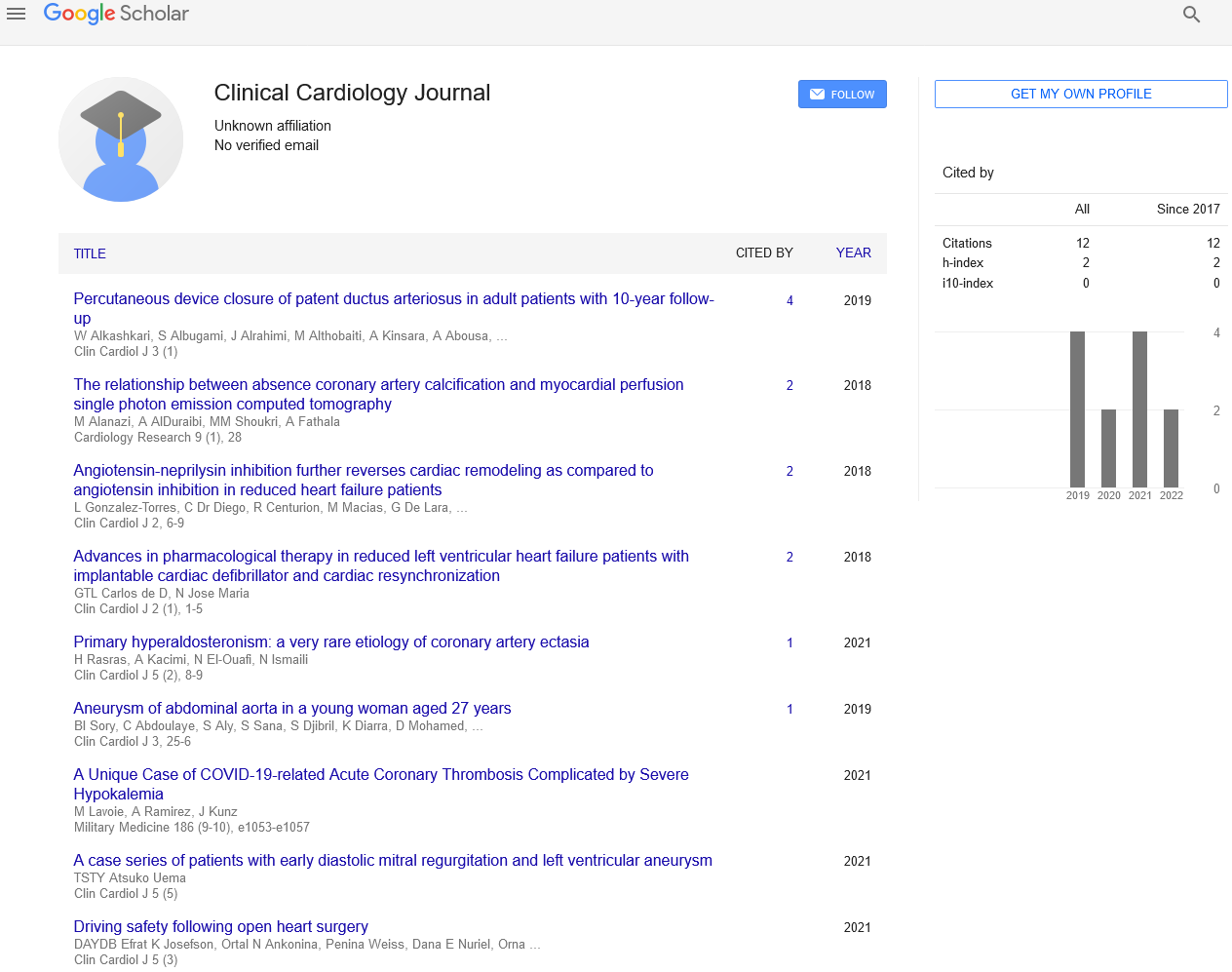Editorial on COVID-19 cardiovascular connection
Received: 05-Jan-2021 Accepted Date: Jan 20, 2021; Published: 28-Jan-2021
This open-access article is distributed under the terms of the Creative Commons Attribution Non-Commercial License (CC BY-NC) (http://creativecommons.org/licenses/by-nc/4.0/), which permits reuse, distribution and reproduction of the article, provided that the original work is properly cited and the reuse is restricted to noncommercial purposes. For commercial reuse, contact reprints@pulsus.com
Editorial
Imaging scans taken months after healing from COVID-19 indicate permanent heart muscle injury, even in patients with only slight symptoms of COVID-19. As a consequence, patients in the future are at greater risk of cardiac failure or other heart problems.
Cardiovascular specialists from Hackensack University Medical Center, David Landers, M.D., Vice Chair, Heart & Vascular Hospital, and Sameer Jamal, M.D., Clinical Cardiac Electrophysiologist, Heart and Vascular Hospital Cardiologist, in conjunction with the COVID-19 Treatment Center of Hackensack Meridian Health, More than 20 patients with Post COVID Syndrome displaying signs of exhaustion, heart palpitations and trouble breathing are currently being examined, long after recovery from their COVID-19 infection. The IRB approved, prospective observational study, is actively enrolling patients, with the hopes of providing an etiology and uncovering a plausible mechanism(s) that may suggest potential treatment.
Some initial impressions include:
1: Who is having Post COVID Syndrome?
2: How long does it last?
3: What treatments are available?
4: What are the signs and symptoms?
5: How can you understand that anything else is not triggering them?
6: Which experiments should be conducted?
7: The procedures are unsafe and the tests are protected by insurers.
8: Are you ready to return to work?
9: If I have Post Covid syndrome, would you spread the disease?
10: Do you work out yourself?
The primary clinical manifestation of COVID-19 is respiratory illness; CV presence happens somewhat less frequently. The most frequently recorded cardiac abnormality in COVID-19 is acute cardiac injury, described as a substantial elevation of cardiac troponin. It happens in about 8-12% of all patients. The most prominent pathways responsible for heart injury tend to be direct myocardial injury due to viral activity of cardiomyocytes and the effects of systemic inflammation. At present, the knowledge about other CV manifestations in COVID-19 is very small. Nevertheless, the presence of pre-existing CV disorder and/or development of acute heart injury has been repeatedly shown to be linked with a substantially poorer outcome in these patients.
Most of the latest COVID-19 studies have identified CV manifestations only briefly in these patients. Further study is needed to explain the prevalence, causes, clinical appearance and effects of different CV manifestations in COVID-19 patients, considering the immense burden presented by this disease and the major adverse prognostic effect of cardiac involvement.





